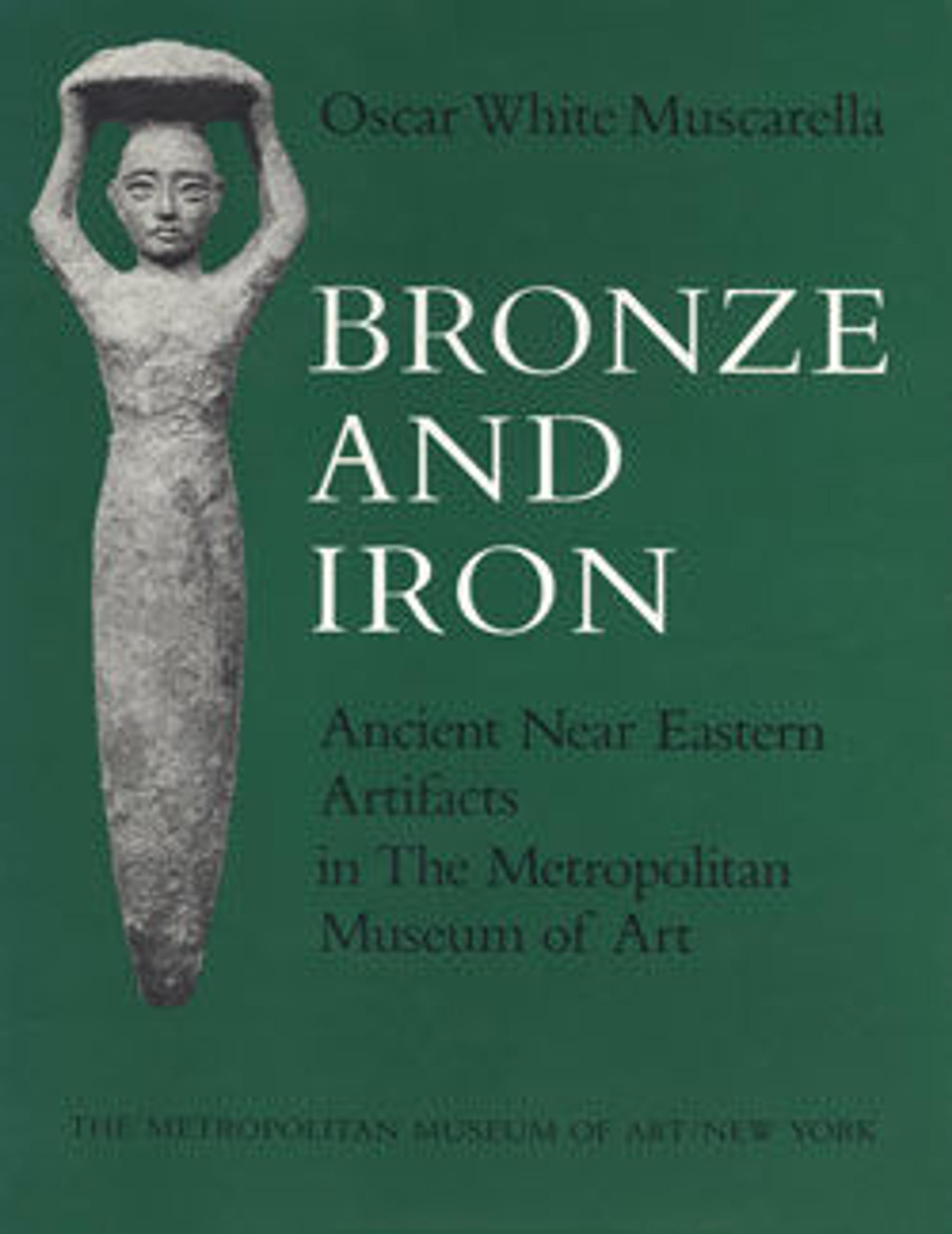Dog
Cast in bronze, this figurine represents a dog with head thrust forward in a posture of alertness, pointed ears pricked up, and curled tail. The dog stands solidly on all four feet, suggesting it is keeping watch rather than in motion. The legs are relatively short and the body compact, suggesting a dog smaller than the mastiffs sometimes represented as guard dogs in Mesopotamian art, such as the large terracotta sculpture on display in the museum (1989.233). This small bronze was found in a well in the Northwest Palace at Nimrud along with other bronze dogs, finely carved ivory furniture elements, and other palace furnishings. It is likely that these objects were thrown in the well by the conquering armies who looted the palace during the final defeat of Assyria by a coalition of Babylonians and Iranian peoples in 612 B.C.
Dogs were associated with several Mesopotamian gods, especially the healing goddess Gula. Clay or bronze dog figurines were frequently placed under the floors of buildings to guard the structures from evil during the late second and early first millennium B.C., a magical act that recalls the use of actual dogs as watchful guardians. Five clay dogs were excavated under a doorway in a later Assyrian palace at Nineveh and are now in the collection of the British Museum. The dogs were painted vivid colors and inscribed with short phrases describing their functions, such as: "Expeller of evil," "Catcher of the enemy," and "Don’t think, bite!" The bronze dog likely had a similar protective function.
Dogs were associated with several Mesopotamian gods, especially the healing goddess Gula. Clay or bronze dog figurines were frequently placed under the floors of buildings to guard the structures from evil during the late second and early first millennium B.C., a magical act that recalls the use of actual dogs as watchful guardians. Five clay dogs were excavated under a doorway in a later Assyrian palace at Nineveh and are now in the collection of the British Museum. The dogs were painted vivid colors and inscribed with short phrases describing their functions, such as: "Expeller of evil," "Catcher of the enemy," and "Don’t think, bite!" The bronze dog likely had a similar protective function.
Artwork Details
- Title: Dog
- Period: Neo-Assyrian
- Date: ca. 9th–8th century BCE
- Geography: Mesopotamia, Nimrud (ancient Kalhu)
- Culture: Assyrian
- Medium: Bronze
- Dimensions: 1 1/4 × 1 9/16 × 1/2 in. (3.1 × 4 × 1.3 cm)
- Credit Line: Rogers Fund, 1954
- Object Number: 54.117.23
- Curatorial Department: Ancient West Asian Art
More Artwork
Research Resources
The Met provides unparalleled resources for research and welcomes an international community of students and scholars. The Met's Open Access API is where creators and researchers can connect to the The Met collection. Open Access data and public domain images are available for unrestricted commercial and noncommercial use without permission or fee.
To request images under copyright and other restrictions, please use this Image Request form.
Feedback
We continue to research and examine historical and cultural context for objects in The Met collection. If you have comments or questions about this object record, please contact us using the form below. The Museum looks forward to receiving your comments.
